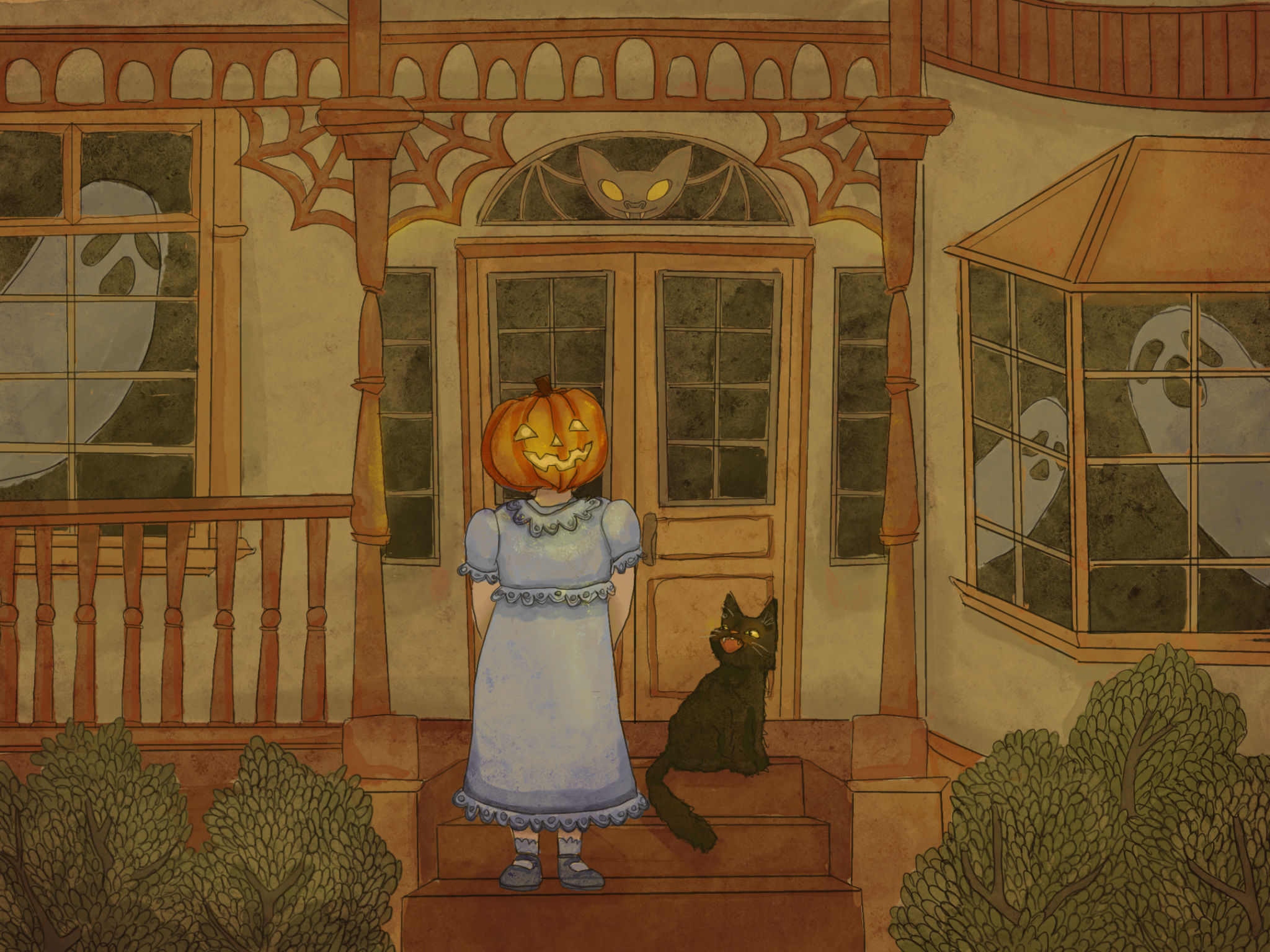
Cate Roser
The second-most baffling part about Halloween —besides the length of the annual Hallowoads line — might be its age. The day of king-sized Twix bars and fun-sized kindergartners draped in white bedsheets holds a few millennia of tangled history to its name —which itself has changed roughly five times — and has mutated its way through more eras than most historians can count. You’d be forgiven if you failed to recognize the holiday’s ancestor in the Celtic bonfires over 2,000 years ago.
All the same, the costumes would have been a running motif. The Celts were known to wear animal heads and skins to ward off ghosts as they tossed sacrifices into sacred fires. The holiday — then called Sanheim — had been meant to mark the beginning of winter’s brutal four months and the time when the dead returned. At night, spirits were believed to roam the earth while priests received heightened prophetic powers. Most Celts gathered the remains of the bonfire after their celebrations to re-light them in their homes.
The story only gets more complicated from there. History suggests that the holiday merged with existing Roman festivals after Claudius conquered the Celts in 43 AD. Feralia — the day on which the Romans honored their dead — just happened to fall somewhere in late October, allowing most Celts to continue their Sanheim customs. Here, Halloween might have started rounding closer into form as the celebrations borrowed from Pomona, another Roman holiday that honored the goddess of fruit and trees — think costumes, prophecies, maybe bonfires, and now apples at this point).
By the time the Catholic Church rose to power in the 9th century, Christian influence had gained enough traction in Celtic territory to challenge the region’s traditional spiritual beliefs. In his letter to Abbot Mellitus, Pope Gregory I urged the missionaries to integrate Christianity into the fold of local Roman-Sanheim festivals. Sanheim celebrations eventually shifted to November 2nd—the day after All Saint’s Day—taking on the title “All Soul’s Day” in its transition to a Church-sanctioned holiday.
The change had little effect on the holiday’s spirit: costumes and parades continued as they did before. The day’s name would morph over a few more centuries—from “Alhalomesse” to “All-Hallows”, then “All-Hallows Eve”—and, finally, “Halloween”.
It didn’t take long for Halloween to associate itself with romantic rituals. 18th century Irish cooks would bury rings in their dinners on Halloween night, supposedly wishing true love to whoever that happened to stumble across it. Scottish fortunetellers would give hazelnuts to a girl’s suitors and encourage them to toss them into the fireplace. On the same night we spend stuffing our pillowcases, revelers in the past would have stared at bowls of egg yolk, tossed apple peels, or drank sweet mixes of nutmeg and walnuts in search of love.
Halloween’s arrival on American soil is somewhat tinted with tragedy. While the day was celebrated in certain mid-Atlantic settlements, it hadn’t entered mainstream Protestant culture until the wave of Irish immigrants fleeing from the Potato Famine gave it roots. Halloween eventually became secularized as parents catered the holiday for their children. It had gathered a strong following among adolescents by the early 1900s, and pranks and vandalism had even escalated to the point where mayors had briefly considered banning the day altogether. Following the Great Depression, hundreds of teenagers destroyed cars and telephone poles in what became known as the “Black Halloween” of 1933.” In the centuries since, Halloween’s emphasis on mischief and superstition would be tamed down to suit middle-class, suburban families.
Historians are divided over the precise origins of trick-or-treating. Some theories trace the beginning of the “treats” to Pomona, or the Scottish custom of “guising”—in which beggars prowled the streets performing tricks in return for sweets. Still others propose influences from “belsniking”, a German-American Christmas tradition in which children would dress in costumes and earned sweets when adults guessed their identities. Either way, candy factories capitalized on those cravings by mass-producing treats in the years after World War II. “Trick or treat” was coined when Charles Schulz released his 1951 Peanuts comic strip.
Our sugary excesses haven’t left us. America hoards up to 600 million pounds of candy for the occasion every year, making Halloween the second-largest commercial holiday (only after Christmas). Candy corn remains as polarizing a treat as ever, with roughly 35 million pounds of it consumed over the month. Chocolate is still the fan favorite.
For all its twists, turns, and changes of hand, Halloween’s story perhaps stands as a reminder, among other things, that parts of us remain unchanged even as others move on. I outgrew the rituals of going door-to-door sometime after middle school. My sugar tooth, though, still thinks otherwise—I consider any excuse for buying a party-sized bag of red-40 infused SourPatch, after all, to be a good one.







